Introduction
Sindh, a province steeped in history and tradition, offers a culinary panorama that’s as diverse as its cultural heritage. From the bustling streets of Karachi to the serene corners of Sukkur, food in Sindh is a tapestry woven with rich flavors and unique dishes, each carrying a story of its own. The cuisine of Sindh isn’t just about sustenance; it’s a celebration of heritage and community, reflecting the region’s dynamic history and the amalgamation of various cultural influences.
The phrase “food in Sindh” evokes a sensory journey through a myriad of aromas and tastes. Its cuisine boasts a delightful range of dishes, from the aromatic Sindhi Biryani to the tangy Sindhi Kadhi, each embodying the essence of local flavors. Beyond satiating hunger, these dishes hold cultural significance, often intertwined with rituals, festivals, and familial traditions.
In our exploration of “food in Sindh,” we aim to delve deeper into this vibrant tapestry, uncovering the historical roots and cultural nuances that have shaped Sindhi cuisine. We’ll embark on a journey through the centuries, tracing the evolution of recipes and ingredients that form the backbone of this culinary tradition.
Our exploration will encompass more than just recipes and flavors. We’ll uncover the significance of locally sourced ingredients, emphasizing the sustainability practices prevalent in the region. Additionally, we’ll delve into the art of pairings, discovering the perfect beverages and accompanying dishes that enhance the “food in Sindh” experience.
Join us as we immerse ourselves in the history, ingredients, sustainability practices, pairings, and cultural significance embedded in the heart of “food in Sindh.” It’s not just about tasting the flavors; it’s about embracing a cultural heritage through a culinary lens, savoring every bite as a testament to Sindh’s rich and diverse traditions.
List of Food in Sindh
| S. No | Name of Food/Dish | Category | Price Range (USD & EUR) | Main Ingredients (if available) |
|---|---|---|---|---|
| 1 | Sindhi Biryani | Savoury | $8-$15 USD, €7-€13 EUR | Rice, Meat, Aromatic Spices |
| 2 | Sindhi Saag | Veg dish | $5-$10 USD, €4-€9 EUR | Spinach, Lentils, Spices |
| 3 | Sindhi Kadhi | Savoury | $6-$12 USD, €5-€10 EUR | Gram Flour, Vegetables, Spices |
| 4 | Seyal Mani | Meat dish | $12-$18 USD, €10-€15 EUR | Meat, Yogurt, Spices |
| 5 | Sindhi Curry | Savoury | $7-$14 USD, €6-€12 EUR | Meat, Yogurt, Spices |
| 6 | Sindhi Pulao | Savoury | $8-$15 USD, €7-€13 EUR | Rice, Meat, Aromatic Spices |
| 7 | Sindhi Kebab | Meat dish | $10-$20 USD, €8-€17 EUR | Minced Meat, Spices |
| 8 | Sindhi Falooda | Sweet | $5-$10 USD, €4-€9 EUR | Vermicelli, Milk, Ice cream |
| 9 | Aloo Tuk | Deep fry dish | $4-$8 USD, €3-€7 EUR | Potatoes, Spices |
| 10 | Sindhi Koki | Pastry | $3-$6 USD, €2-€5 EUR | Whole Wheat Flour, Ghee, Spices |
| 11 | Bhugal Mutton | Meat dish | $14-$25 USD, €12-€20 EUR | Mutton, Aromatic Spices |
| 12 | Sindhi Lassi | Beverage | $3-$6 USD, €2-€5 EUR | Yogurt, Milk, Sweetener |
| 13 | Seyal Bhaji | Veg dish | $5-$10 USD, €4-€9 EUR | Spinach, Potatoes, Spices |
| 14 | Dal Pakwan | Savoury | $6-$12 USD, €5-€10 EUR | Lentils, Crispy Bread |
| 15 | Bhugal Biryani | Savoury | $9-$16 USD, €8-€14 EUR | Rice, Meat, Aromatic Spices |
| 16 | Sindhi Curry Chawal | Savoury | $7-$14 USD, €6-€12 EUR | Meat, Rice, Spices |
| 17 | Sindhi Chicken Curry | Savoury | $9-$18 USD, €7-€15 EUR | Chicken, Yogurt, Spices |
| 18 | Sindhi Fish Curry | Seafood | $12-$25 USD, €10-€20 EUR | Fish, Aromatic Spices |
| 19 | Sindhi Karhi Chawal | Savoury | $8-$15 USD, €7-€13 EUR | Yogurt, Gram Flour, Rice |
| 20 | Sindhi Dal | Savoury | $5-$10 USD, €4-€9 EUR | Lentils, Spices |
| 21 | Sindhi Palak | Veg dish | $6-$12 USD, €5-€10 EUR | Spinach, Spices |
| 22 | Sindhi Koki with yogurt | Pastry | $4-$8 USD, €3-€7 EUR | Whole Wheat Flour, Yogurt, Spices |
| 23 | Sindhi Sweets (Various varieties) | Sweet | $3-$15 USD, €2-€12 EUR | Milk, Sugar, Nuts, Spices |
| 24 | Sindhi Kheer | Sweet | $4-$9 USD, €3-€8 EUR | Rice, Milk, Sugar, Cardamom |
| 25 | Sindhi Bhajiya | Deep fry dish | $5-$10 USD, €4-€9 EUR | Vegetables, Gram Flour, Spices |
| 26 | Sindhi Bread (Various types) | Pastry | $3-$7 USD, €2-€6 EUR | Flour, Yeast, Oil, Spices |
| 27 | Bhugal Rice | Savoury | $7-$14 USD, €6-€12 EUR | Rice, Aromatic Spices |
| 28 | Kheema Pav Sindhi Style | Meat dish | $8-$16 USD, €7-€14 EUR | Minced Meat, Bread, Spices |
| 29 | Seyal Dabroti | Deep fry dish | $4-$9 USD, €3-€8 EUR | Bread, Spices |
| 30 | Sindhi Kachori | Savoury | $5-$11 USD, €4-€10 EUR | Flour, Lentils, Spices |
| S. No | Name of Food/Dish | Category | Price Range (USD & EUR) | Main Ingredients (if available) |
Note: The price range provided is approximate and may vary depending on the restaurant or vendor.
Sindhi Biryani: Sindhi Biryani is a fragrant rice dish layered with marinated meat, aromatic spices, fried onions, and potatoes. It’s renowned for its vibrant flavors, typically combining tender chunks of meat—often goat or chicken—with a mix of spices such as cumin, cloves, cardamom, and saffron. The dish is slow-cooked, allowing the flavors to meld together, resulting in a flavorful and aromatic meal.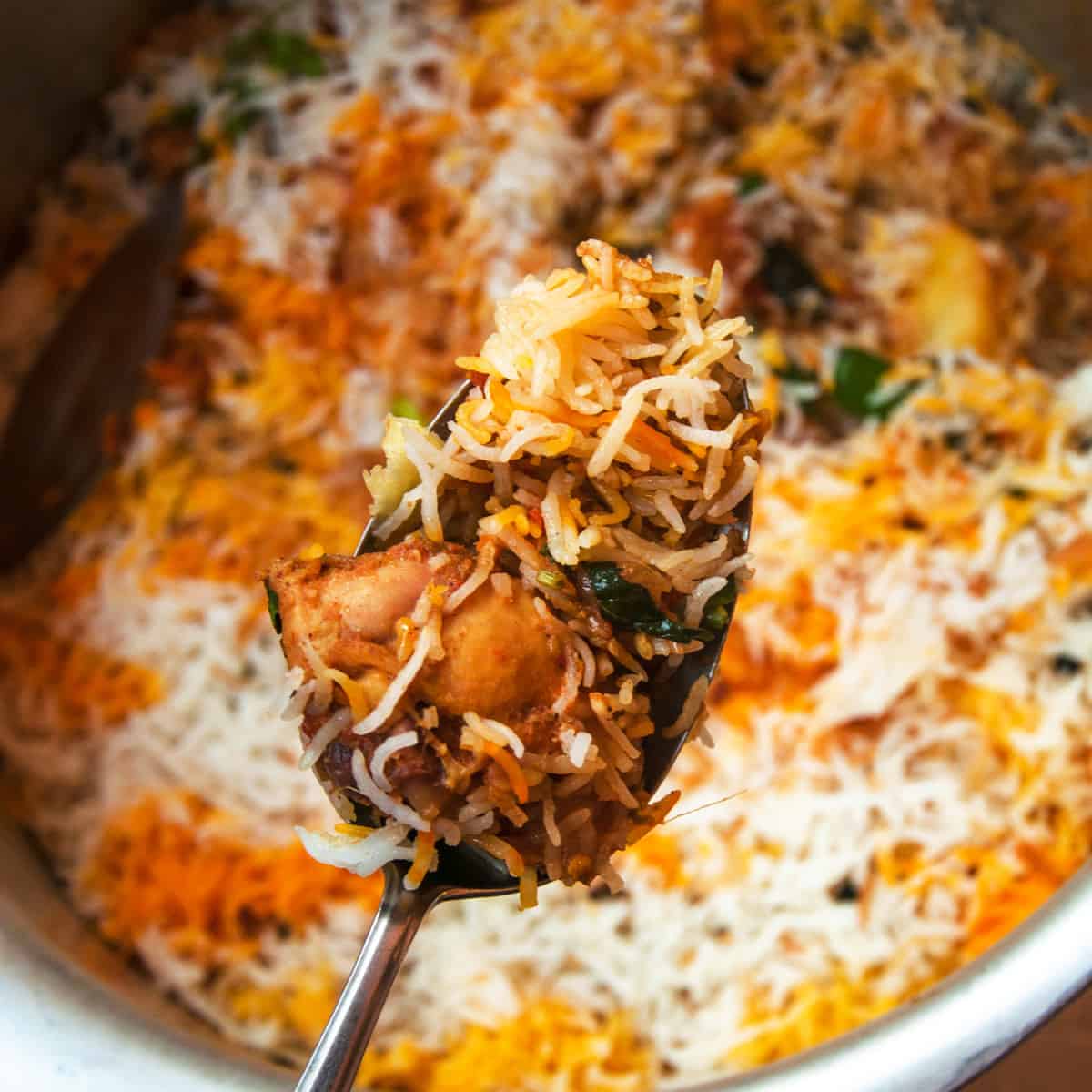
Sindhi Saag: Sindhi Saag is a nutritious and flavorful vegetable dish made primarily with spinach (saag) and various lentils or dal. It’s simmered with a blend of spices including cumin, turmeric, and chili powder to create a thick, savory gravy. Often, it’s garnished with a tadka or tempering of garlic, red chilies, and cumin seeds sautéed in oil, enhancing its taste.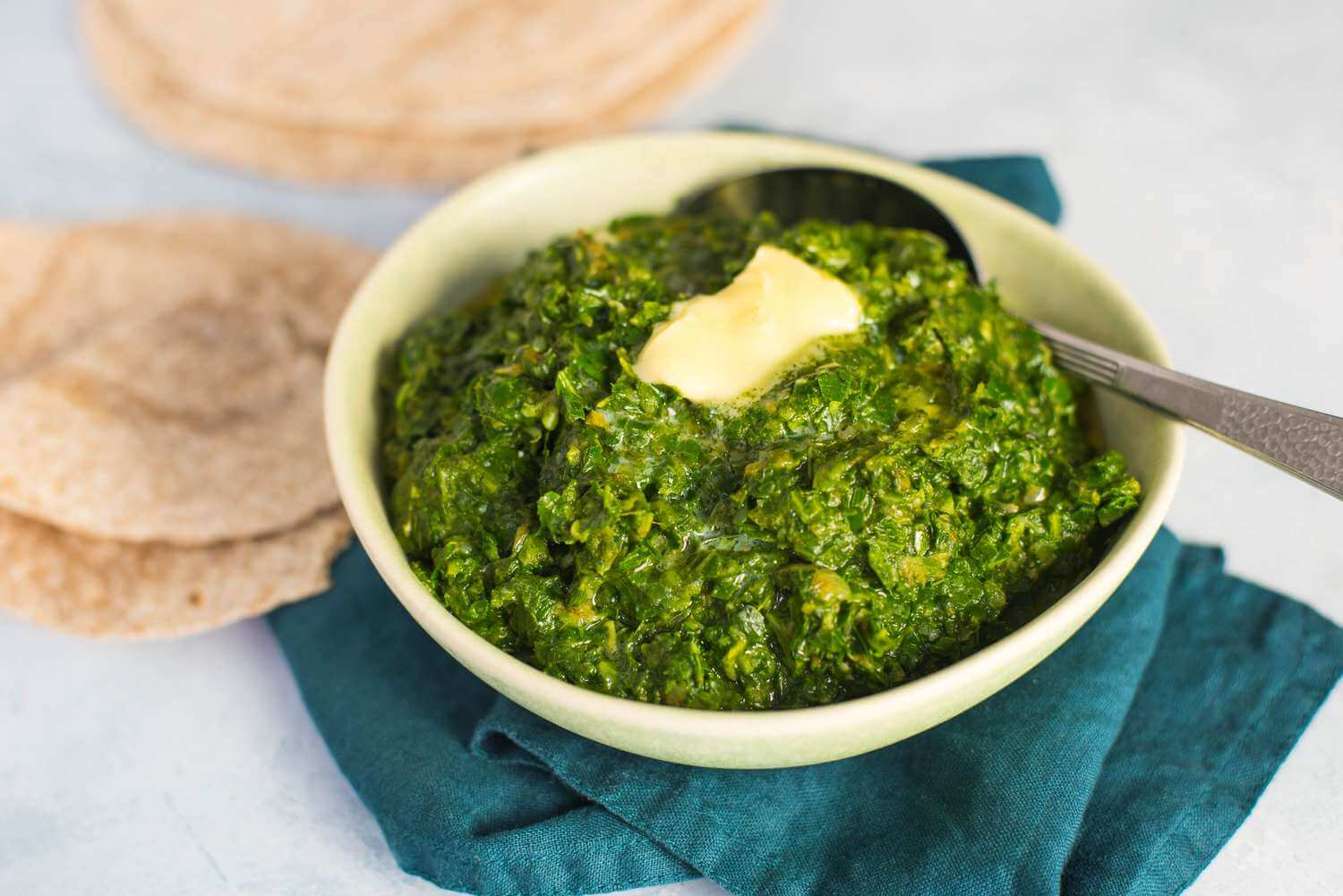
Sindhi Kadhi: Sindhi Kadhi is a tangy and spicy dish prepared with gram flour (besan), vegetables like okra, drumsticks, and potatoes, and flavored with tamarind pulp or dried mango powder. The base consists of a yogurt and gram flour mixture simmered with spices like fenugreek seeds, turmeric, and red chili powder, resulting in a flavorful, sour curry.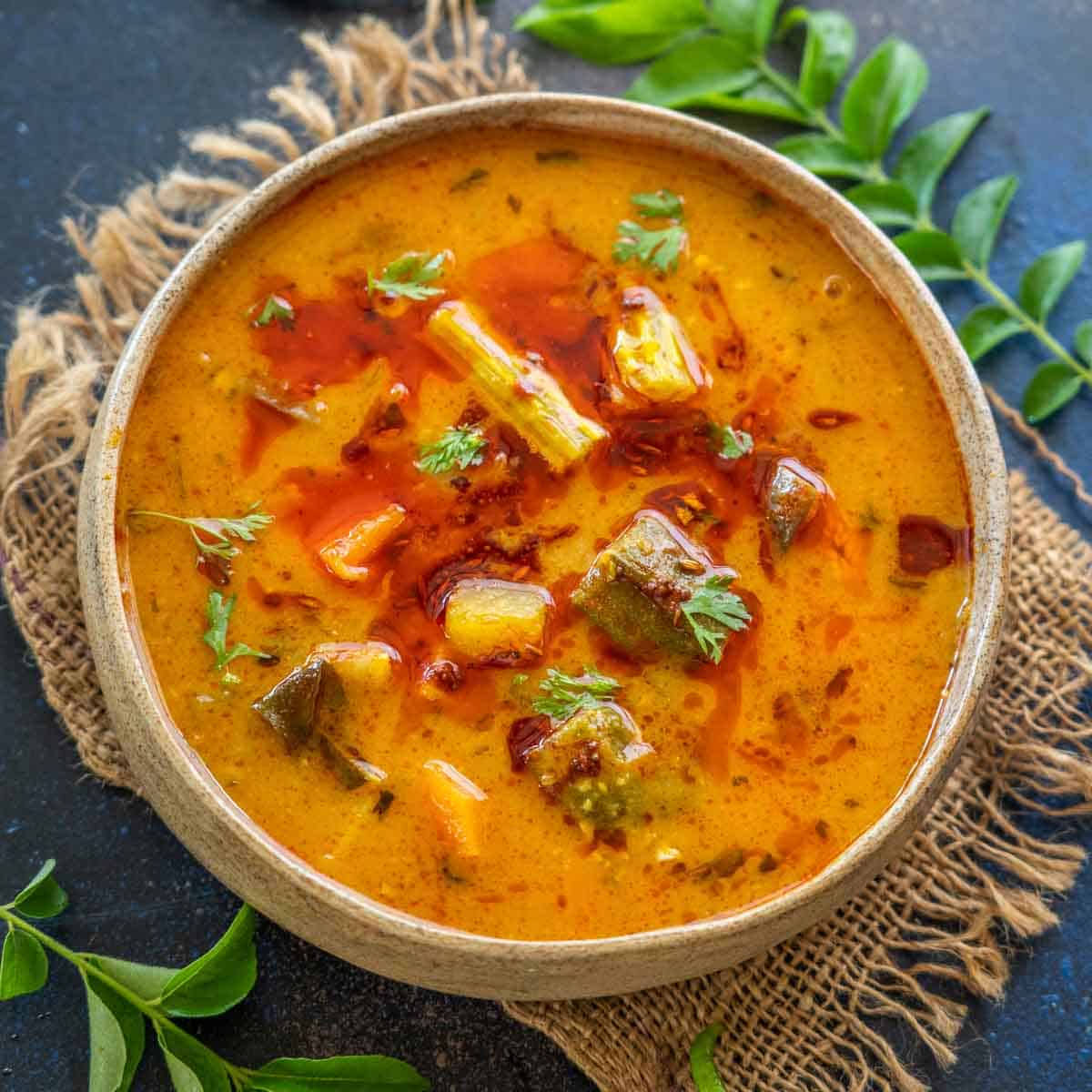
Seyal Mani: Seyal Mani is a traditional Sindhi meat dish prepared by slow-cooking chunks of meat, often beef or mutton, in a rich onion-tomato gravy. It’s seasoned with a blend of spices like coriander, cumin, ginger, and garlic, creating a hearty and aromatic dish that’s usually served with bread or rice.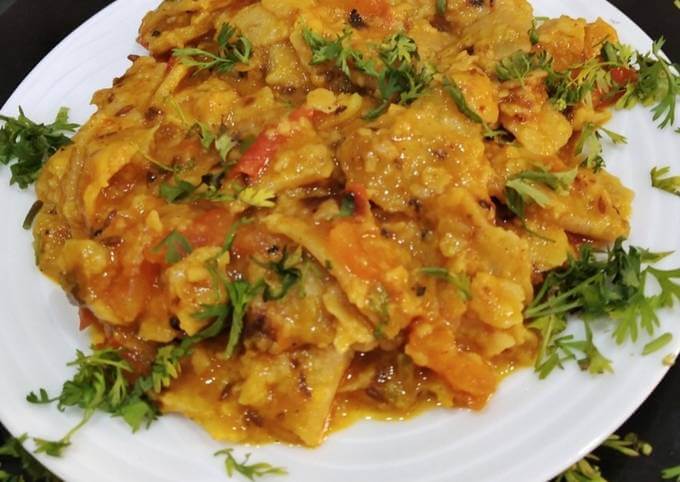
Sindhi Curry: Sindhi Curry is a delightful combination of various vegetables like potatoes, carrots, peas, and beans cooked in a tangy and slightly sweet tomato-based gravy. The dish is flavored with a mix of spices and often includes tamarind pulp or dried mango powder, offering a unique taste.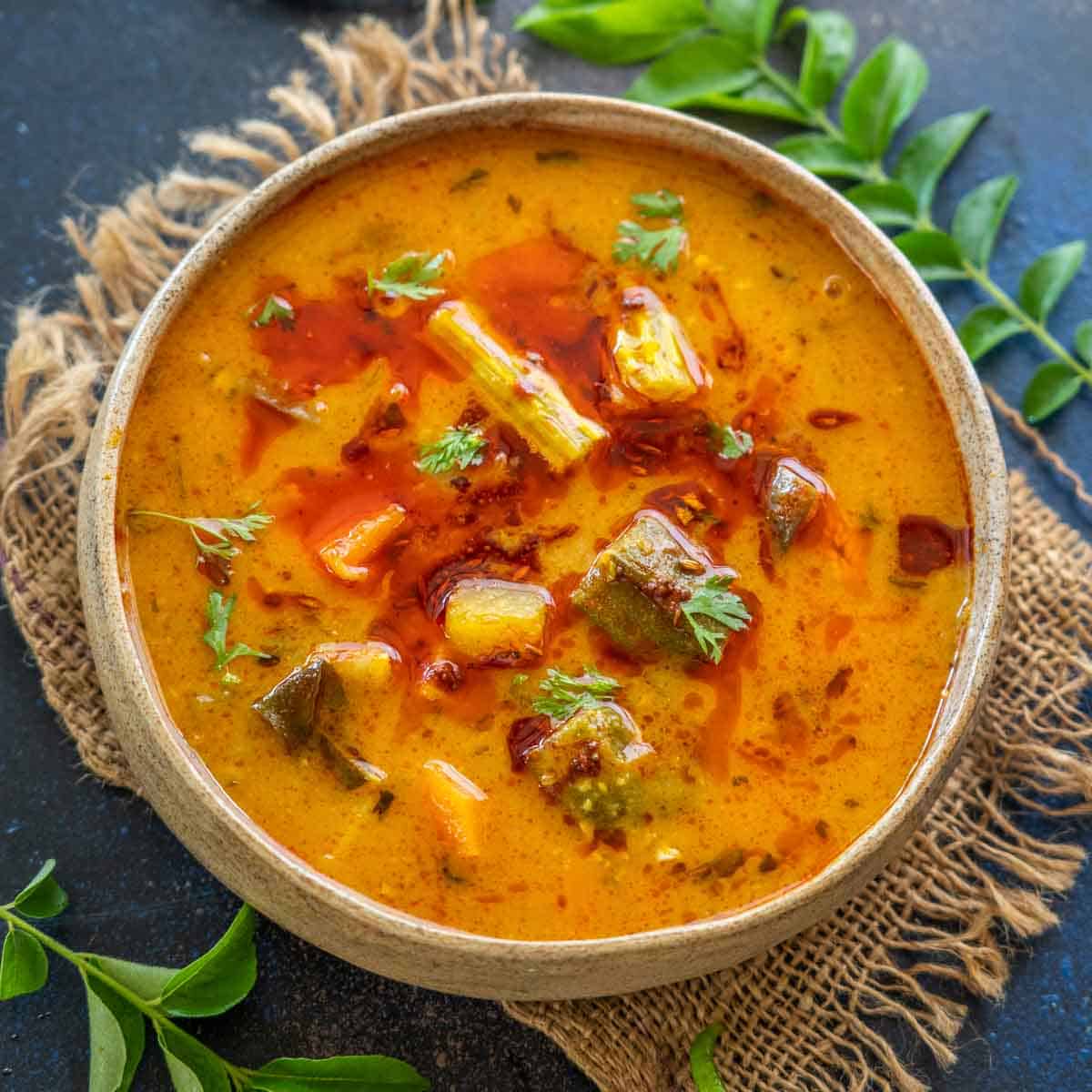
Sindhi Pulao: Sindhi Pulao is a fragrant rice dish cooked with caramelized onions, whole spices, and sometimes meat or vegetables. It’s distinct due to its mildly sweet taste derived from caramelized onions, and it often includes a variety of aromatic spices like cinnamon, cloves, and bay leaves.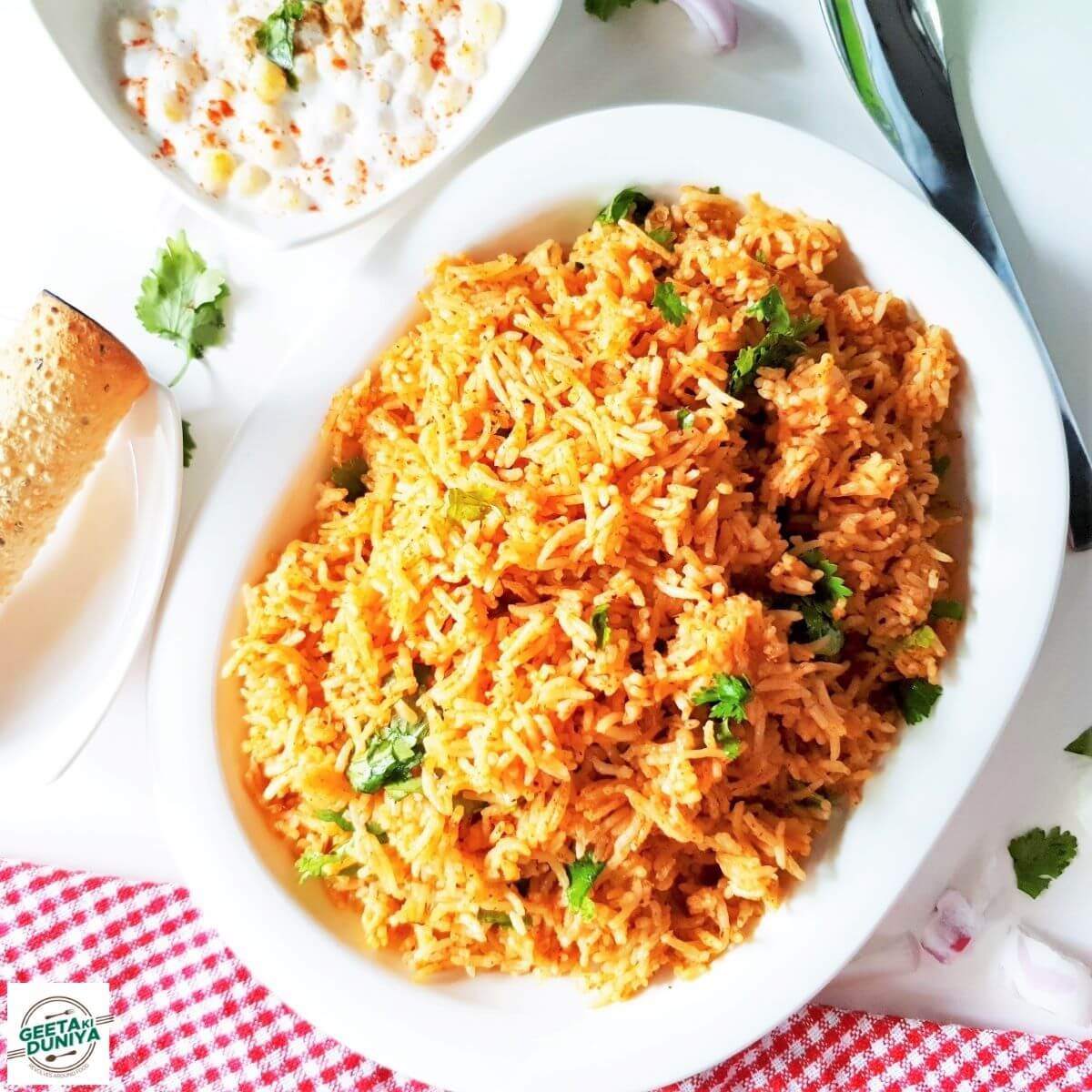
Sindhi Kebab: Sindhi Kebabs are flavorful minced meat patties, typically made with ground beef or mutton mixed with spices like cumin, coriander, chili powder, and herbs like mint and cilantro. These kebabs are then grilled or pan-fried to perfection, resulting in a juicy and aromatic delicacy.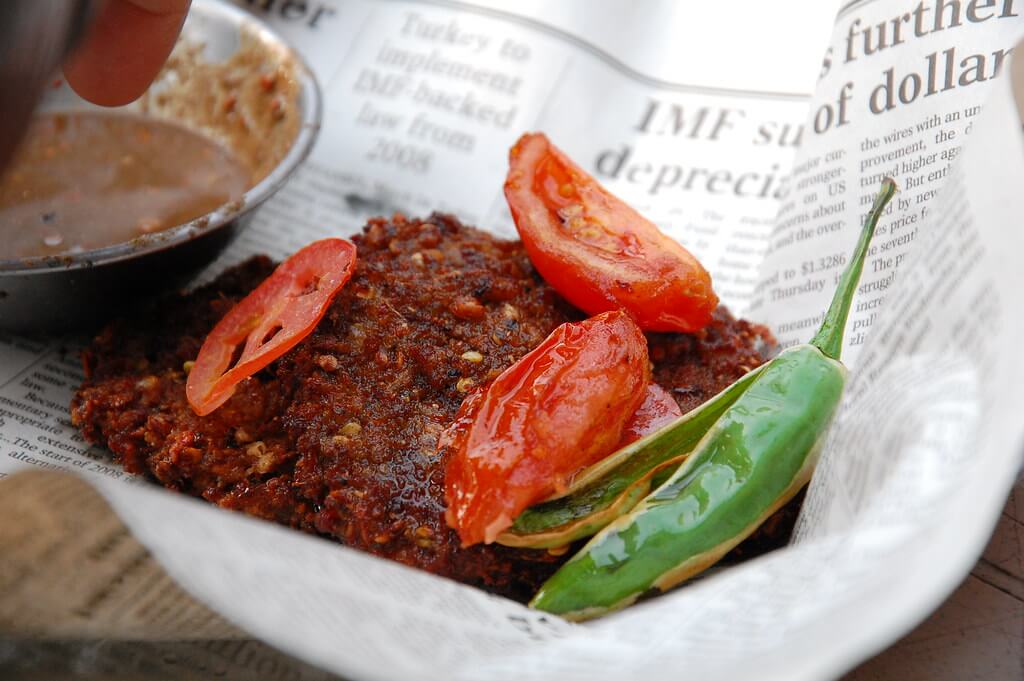
Sindhi Falooda: Sindhi Falooda is a refreshing dessert drink made with a combination of vermicelli noodles, basil seeds, rose syrup, milk, and ice cream. It’s a sweet and creamy beverage enjoyed for its unique texture and taste.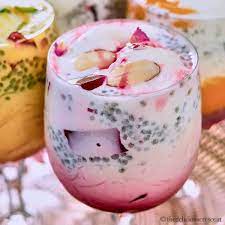
Aloo Tuk: Aloo Tuk is a popular Sindhi snack made from deep-fried seasoned potato slices. The potatoes are fried until they’re crispy on the outside and tender on the inside, seasoned with spices like cumin, red chili powder, and chaat masala for a flavorful crunch.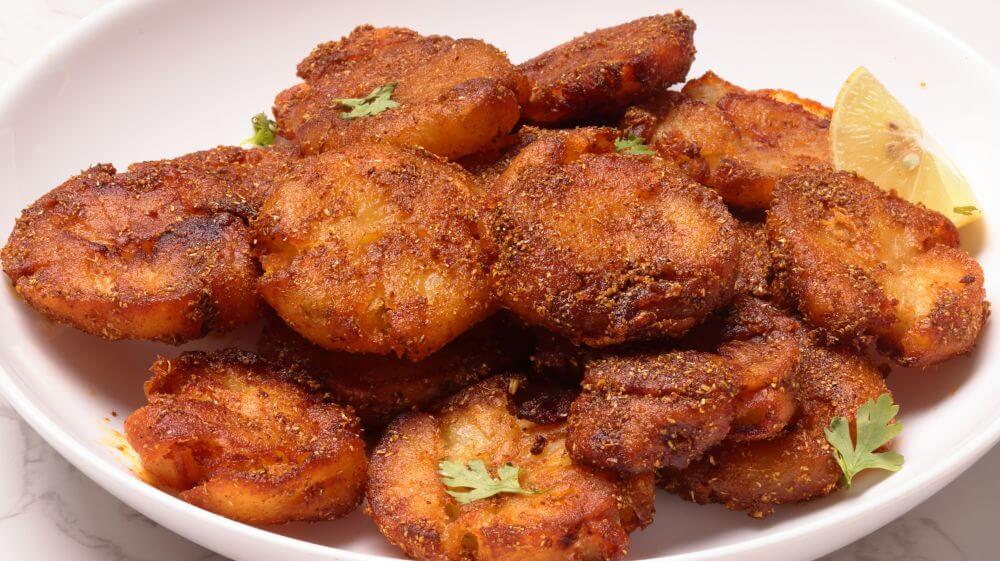
Sindhi Koki: Sindhi Koki is a flatbread made from whole wheat flour, onions, green chilies, and spices like cumin seeds. It’s rolled out and cooked on a griddle, resulting in a crispy and flavorful bread, often enjoyed with yogurt or chutney.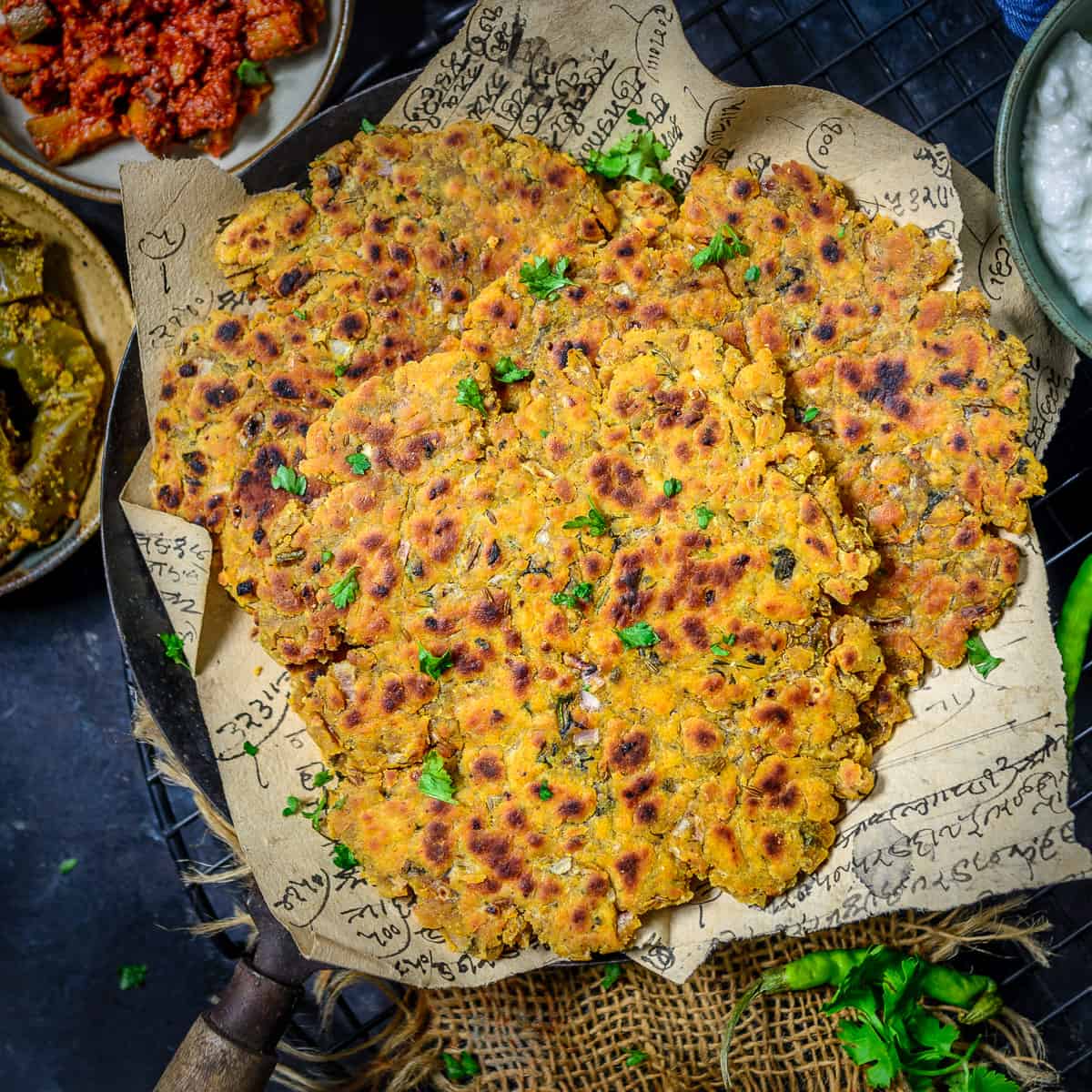
Bhugal Mutton: Bhugal Mutton is a hearty and rich mutton (goat meat) dish cooked slowly with an array of aromatic spices. The meat is simmered until tender in a thick gravy infused with flavors of cinnamon, cloves, cardamom, and bay leaves. This dish showcases the essence of slow cooking, resulting in a tender, flavorful meat that pairs exceptionally well with bread or rice.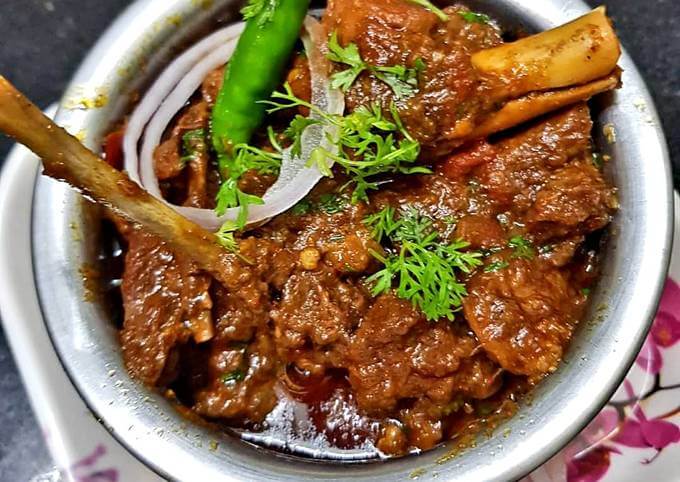
Sindhi Lassi: Sindhi Lassi is a popular beverage made from yogurt blended with water, and sugar, and sometimes flavored with rosewater or cardamom. It’s a refreshing drink, often enjoyed during hot weather or as a complement to spicy Sindhi dishes, offering a cooling and slightly tangy taste.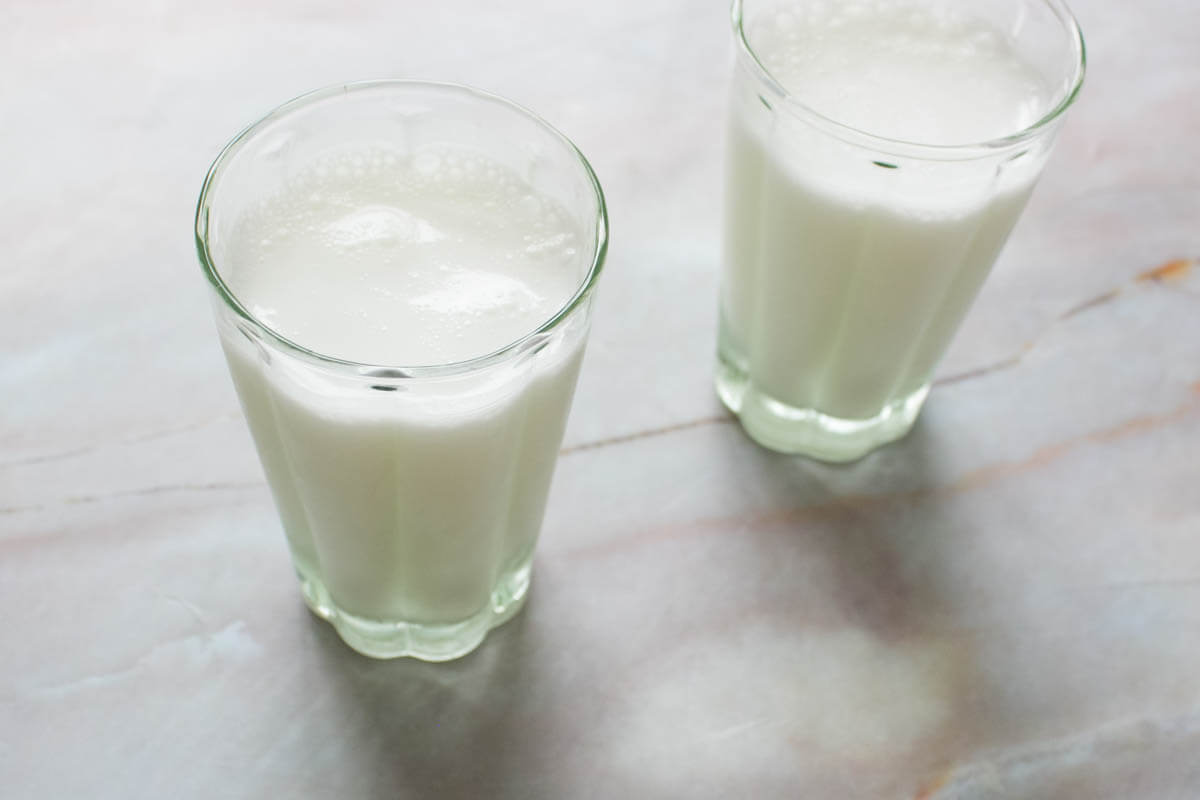
Dal Pakwan: Dal Pakwan comprises crispy fried bread (pakwan) served with a flavorful lentil curry (dal). The dal is usually made from chana dal or split chickpeas cooked with spices like turmeric, cumin, and mustard seeds, creating a thick and savory accompaniment to the crunchy pakwan.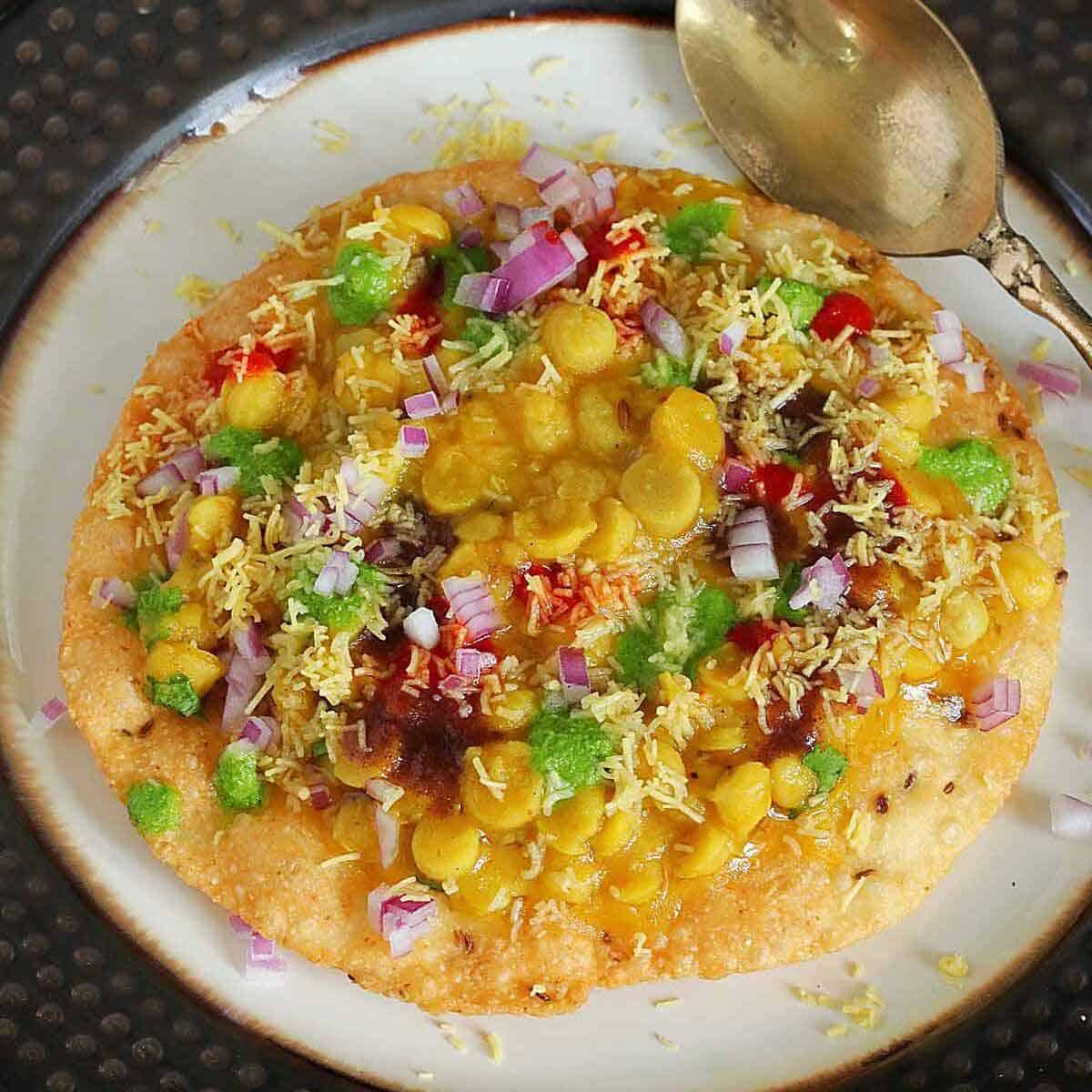
Sindhi Chicken Curry: Sindhi Chicken Curry is a delectable chicken dish cooked in a spicy and aromatic gravy. Marinated chicken pieces are simmered with onions, tomatoes, and a blend of spices such as garam masala, coriander, and red chili powder, resulting in a savory and flavorful curry.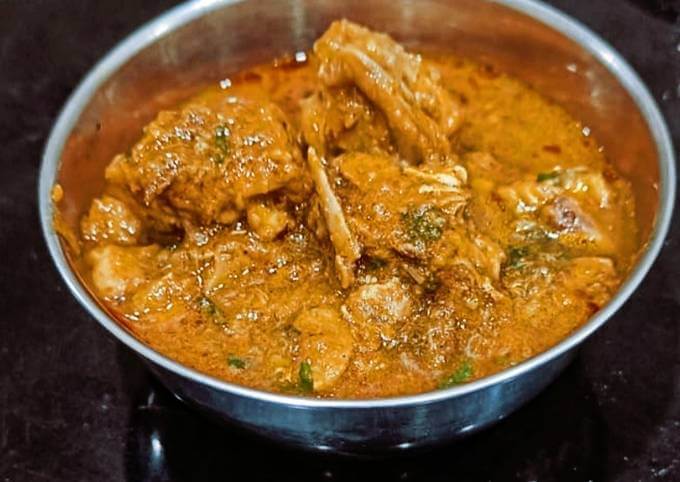
Sindhi Fish Curry: Sindhi Fish Curry is a seafood delight featuring fish cooked in a tangy and flavorful gravy. The fish, often varieties like pomfret or Rohu, is simmered in a mixture of tomatoes, tamarind, spices, and herbs, creating a zesty curry that perfectly complements the natural flavors of the fish.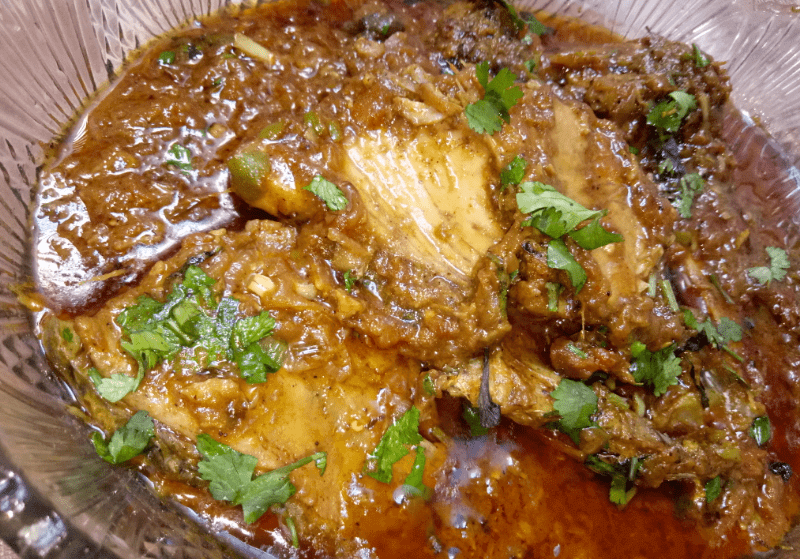
Sindhi Karhi Chawal: Sindhi Karhi Chawal is a comforting dish featuring a tangy curry made from gram flour (besan) and yogurt, cooked with assorted vegetables like okra, potatoes, and drumsticks. The curry is seasoned with spices like turmeric, red chili powder, and fenugreek seeds, creating a flavorful base that’s served with steamed rice (chawal), offering a perfect balance of tanginess and spice.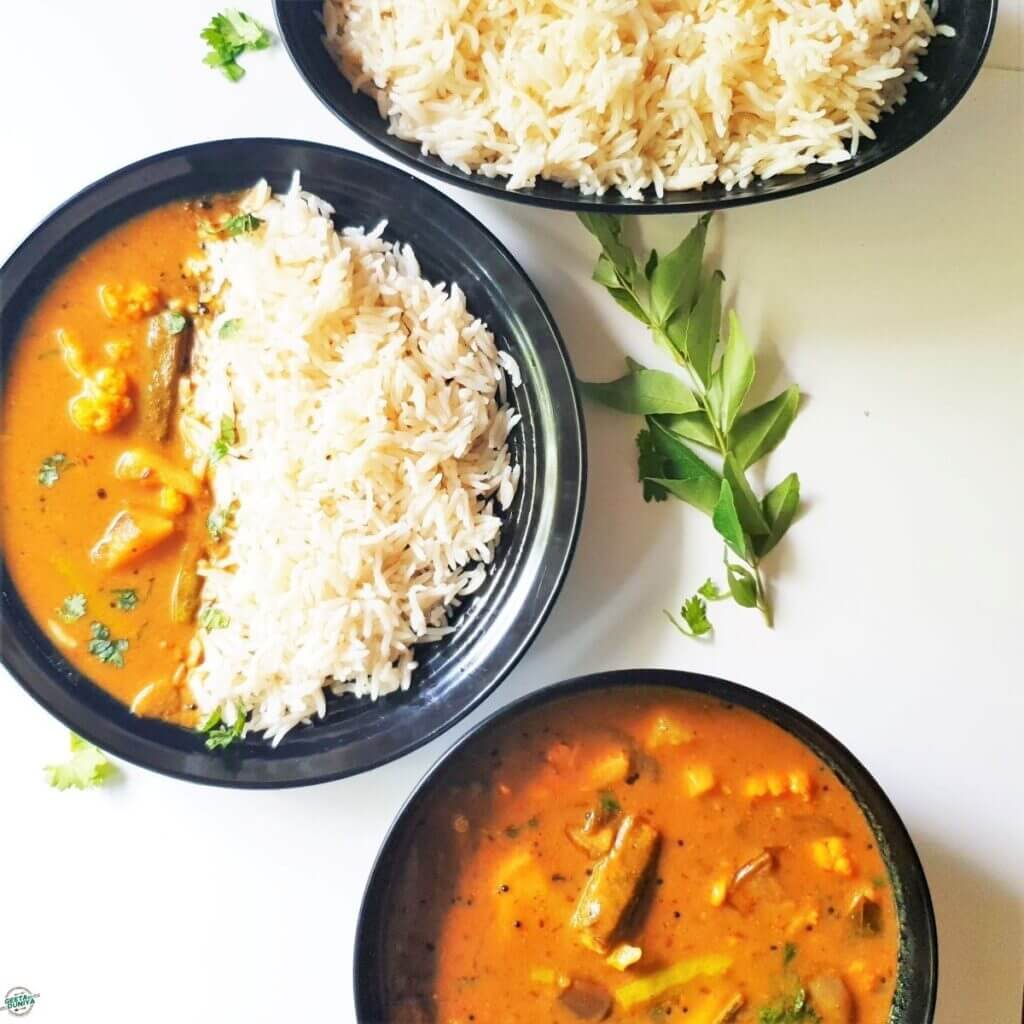
Sindhi Dal: Sindhi Dal is a simple yet flavorful lentil dish, often prepared using chana dal or split chickpeas cooked with onions, tomatoes, and a blend of spices such as cumin, coriander, and red chili powder. It’s simmered until the lentils are soft and infused with the aromatic flavors of the spices, creating a hearty and nutritious accompaniment to rice or bread.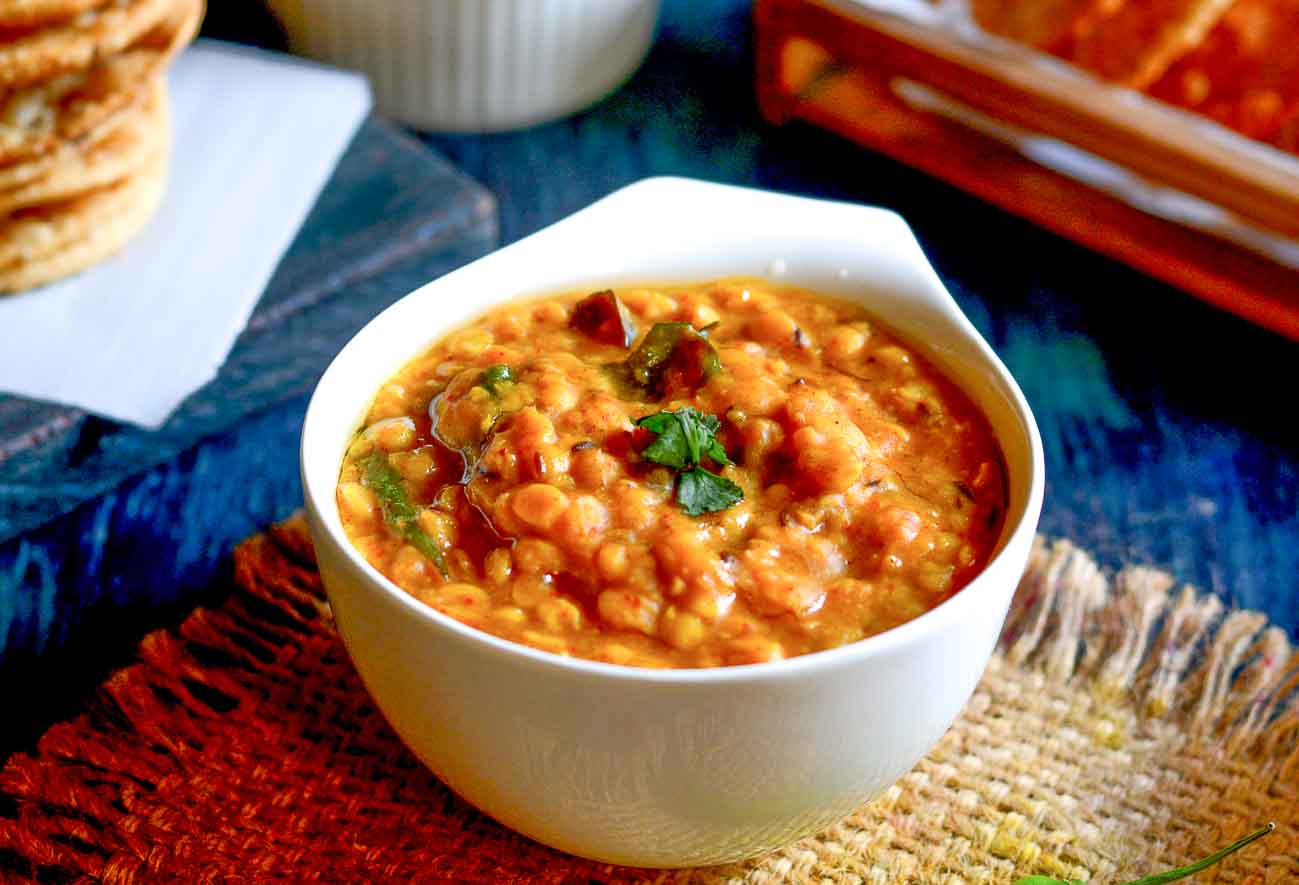
Sindhi Palak: Sindhi Palak is a dish where spinach (palak) is cooked with garlic, green chilies, and a mix of spices such as cumin seeds and turmeric, resulting in a vibrant and flavorful spinach side dish. It’s often served alongside main courses, adding a nutritious element to the meal.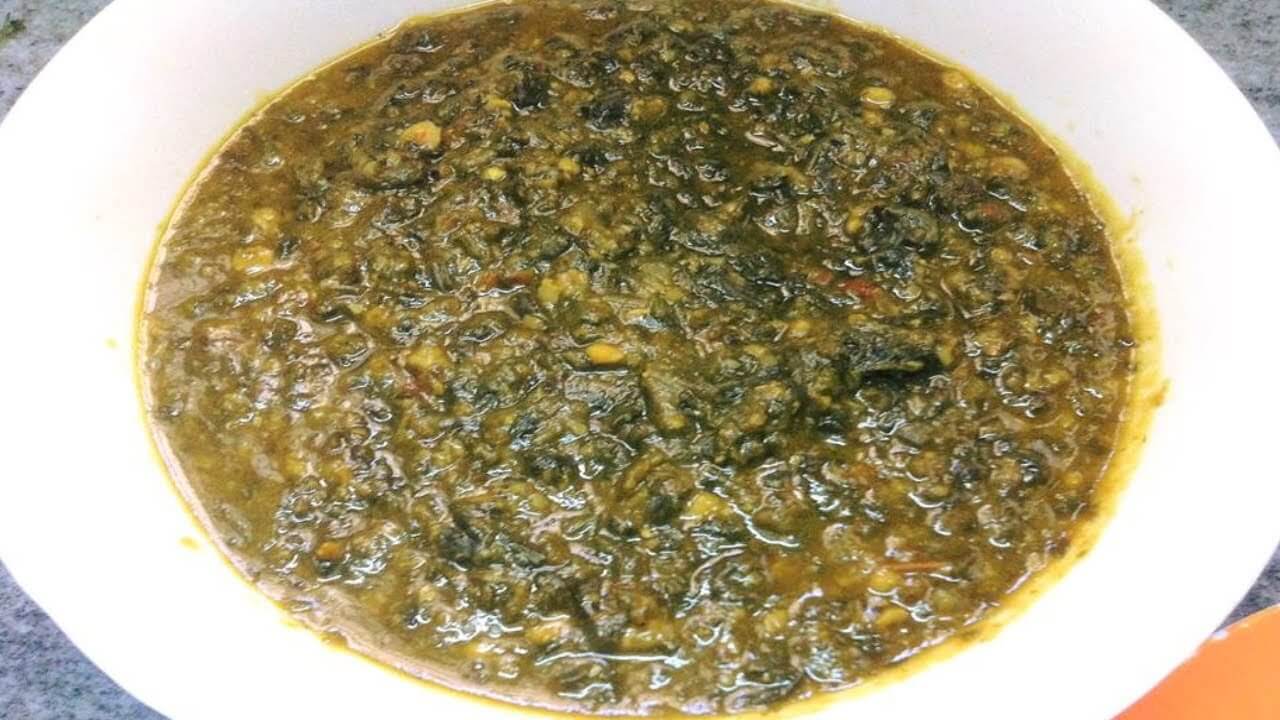
Sindhi Sweets (Various varieties): Sindhi cuisine offers a wide array of delightful sweets encompassing traditional desserts like Sohan Halwa, Kaju Katli, Gajar Ka Halwa, and Gulab Jamun. These sweets are made with ingredients like milk, sugar, ghee, nuts, and aromatic spices, showcasing a blend of textures and flavors that cater to different palates.
Sindhi Kheer: Sindhi Kheer is a creamy and aromatic rice pudding made by simmering rice, milk, sugar, and sometimes cardamom until it reaches a thick consistency. It’s garnished with nuts like almonds, cashews, and pistachios, offering a delightful dessert option with a comforting richness.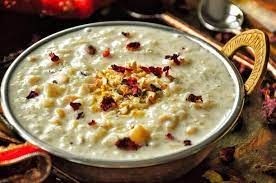
Sindhi Bhajiya: Sindhi Bhajiya refers to deep-fried fritters made from besan (gram flour) batter mixed with chopped onions, potatoes, and spices like cumin, chili powder, and turmeric. These crispy fritters are a popular snack in Sindhi cuisine, enjoyed for their crunchy texture and savory taste.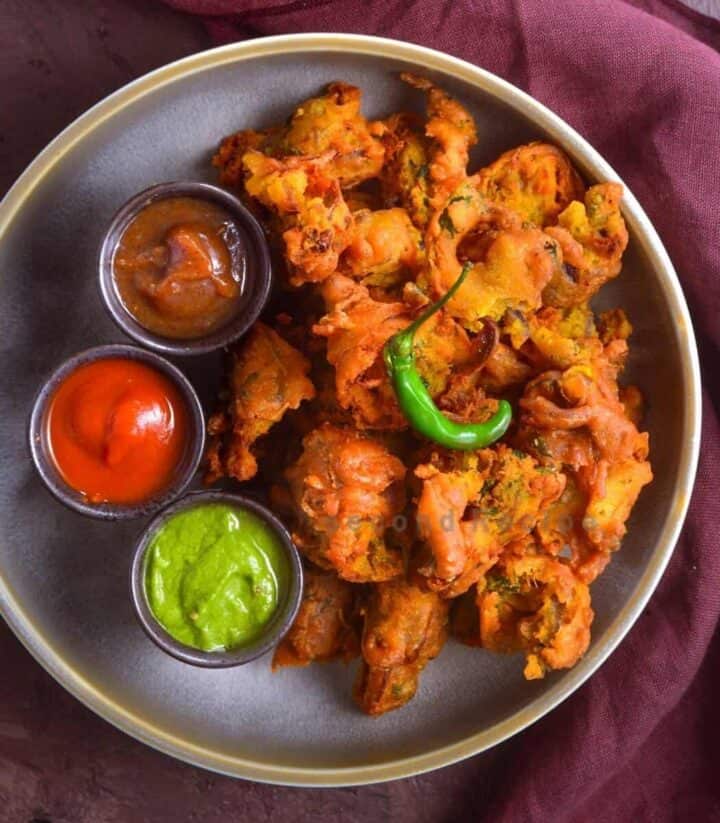
Sindhi Bread (Various types): Sindhi cuisine boasts various types of bread, including the famous Sindhi Koki— a flatbread made from whole wheat flour, onions, green chilies, and spices like cumin seeds. Additionally, Sindhi cuisine offers a range of breads like Lolo, Bhakri, and Phulka, each with its unique preparation and taste.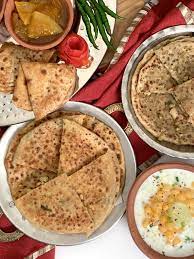
Kheema Pav Sindhi Style: Kheema Pav is a minced meat dish cooked with spices like cumin, coriander, and garam masala, served with pav or bread. In Sindhi style, the dish may have its regional variations, often incorporating a flavorful mix of spices and herbs.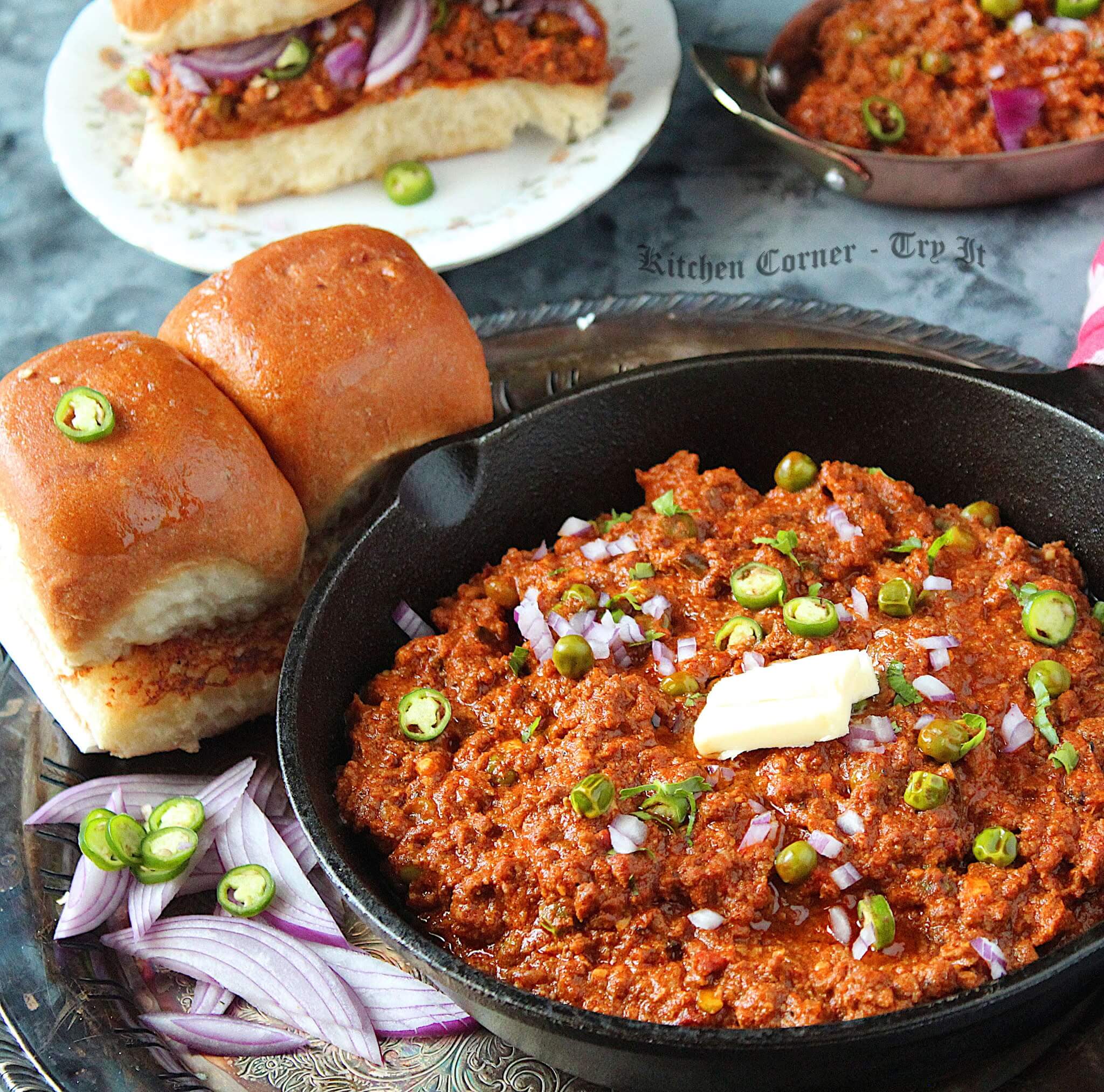
Seyal Dabroti: Seyal Dabroti is a traditional Sindhi breakfast dish made with leftover bread slices that are soaked in a spicy and tangy tomato-based gravy. The bread absorbs the flavors of the gravy, resulting in a soft yet flavorful dish typically garnished with fresh coriander leaves.
Sindhi Kachori: Sindhi Kachori is a deep-fried snack consisting of a crisp outer layer made from flour stuffed with a spiced lentil or potato filling. These savory pastries are a popular street food item in Sindhi cuisine, enjoyed for their crunchy exterior and flavorful filling.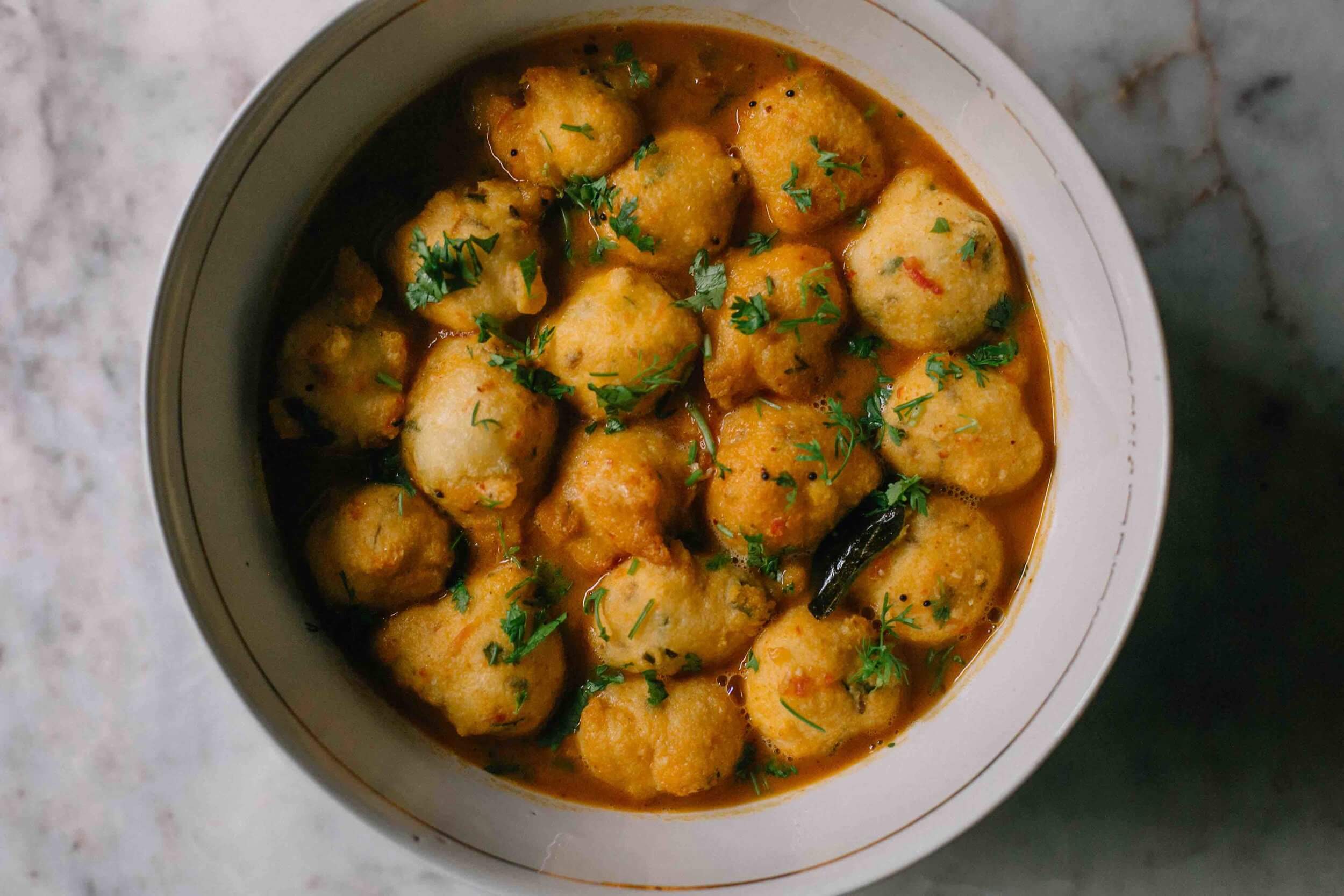
Bhugal Rice: Bhugal Rice is a dish where rice is cooked with an assortment of aromatic spices like cloves, cinnamon, and cardamom, along with caramelized onions. This dish boasts a unique sweet-savory flavor profile due to the caramelized onions, offering a delicious side or main course option.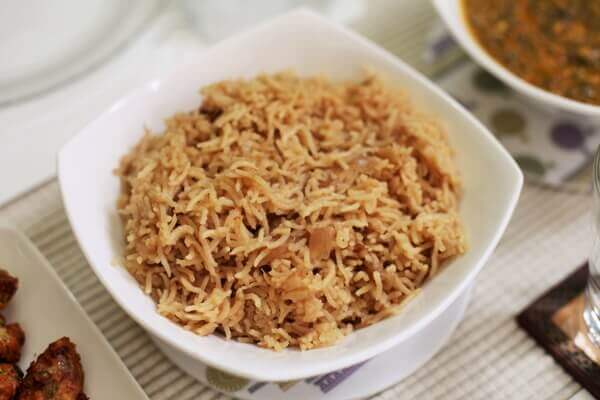
Sindhi Paneer Masala: Sindhi Paneer Masala is a flavorful dish where paneer (Indian cottage cheese) is cooked in a rich and spicy tomato-based gravy. The gravy is prepared with onions, tomatoes, ginger-garlic paste, and a blend of spices like garam masala and turmeric, resulting in a satisfying vegetarian dish.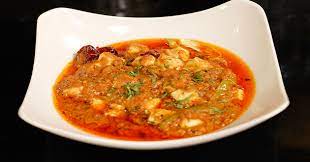
Sindhi Style Chicken Roast: Sindhi Style Chicken Roast involves marinating chicken pieces in a blend of spices, yogurt, and sometimes vinegar or lemon juice, before roasting or baking until tender and juicy. This dish showcases a fusion of spices that contribute to its savory and aromatic taste.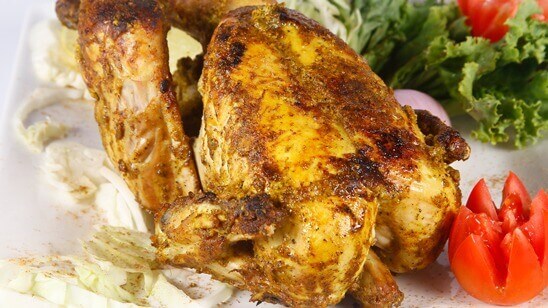
Sindhi Dry Fruits Kheer: Sindhi Dry Fruits Kheer is a creamy rice pudding enriched with an assortment of dry fruits such as almonds, cashews, raisins, and pistachios. It’s prepared similarly to regular kheer but with the addition of these crunchy and flavorful nuts, enhancing its taste and texture.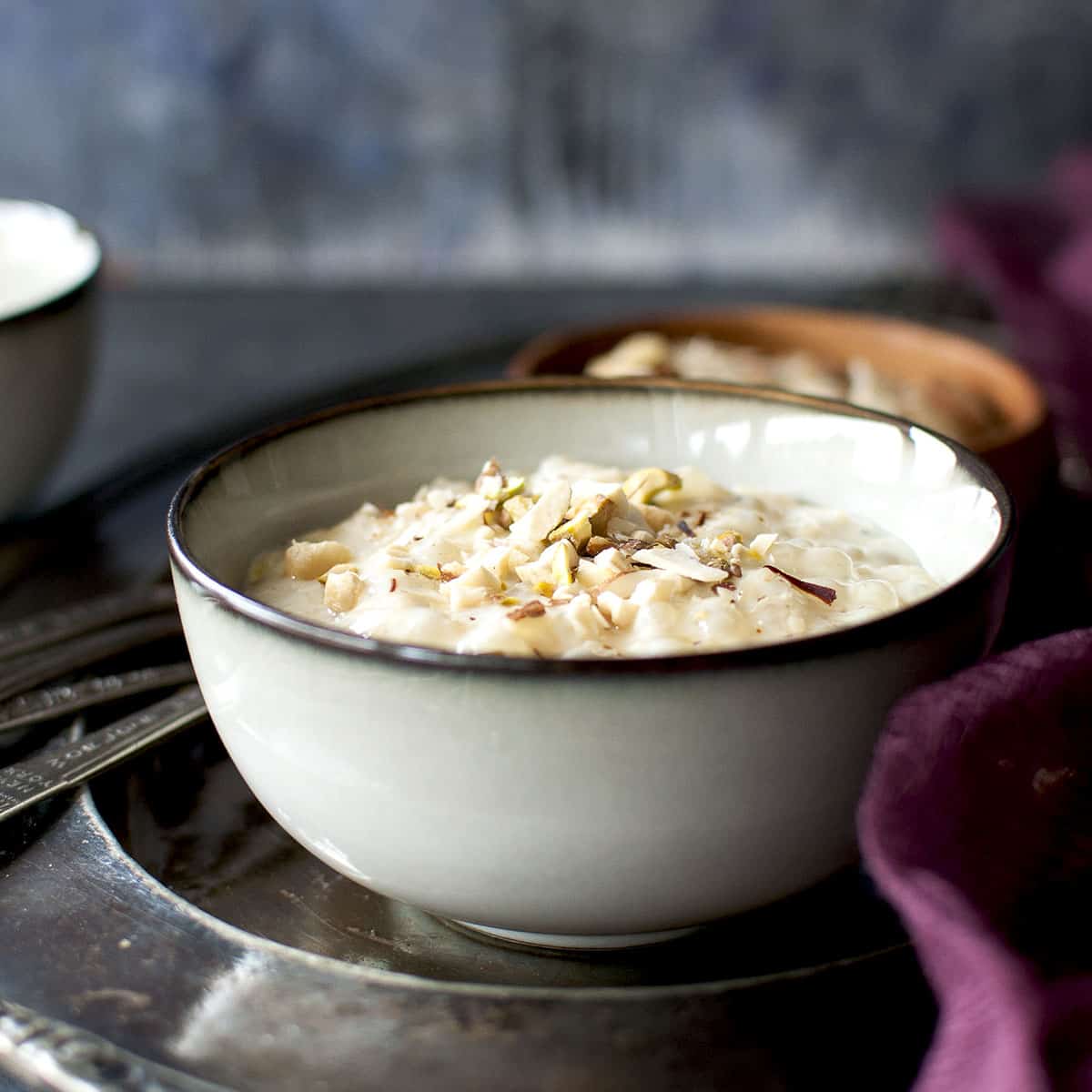
Sindhi Style Matar Paneer: Sindhi Style Matar Paneer is a classic dish made with paneer and green peas cooked in a tomato-based gravy infused with spices like cumin, coriander, and turmeric. The dish showcases the delicate flavors of paneer and peas in a rich and aromatic gravy, often enjoyed with rice or bread.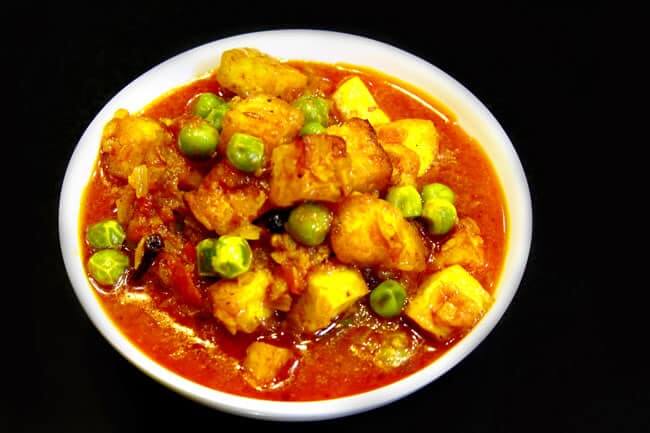
History and Culture
Sindh’s culinary legacy is a tapestry woven with threads of history, tracing back through millennia and influenced by the ancient civilizations that flourished in the region. The food in Sindh today is a testament to a rich cultural tapestry woven over centuries, reflecting the diverse influences of civilizations that traversed this land.
Historical Background
The roots of food in Sindh are deeply entwined with the ancient Indus Valley Civilization, one of the world’s oldest urban civilizations. This civilization, with its sophisticated urban planning and agrarian practices, laid the foundation for agricultural practices that continue to influence Sindhi cuisine. Subsequent waves of influence from Persian and Arab traders traversing the ancient trade routes enriched the region’s culinary heritage, introducing spices, cooking techniques, and ingredients that melded into the local cuisine.
Impact of Trade Routes Sindh’s strategic geographical location at the crossroads of major trade routes, including the Silk Road, facilitated cultural exchange and shaped the diversity of “food in Sindh.” The trade routes brought in a mélange of flavors, spices, and cooking methods from distant lands, contributing to the varied tastes and aromatic dishes found in Sindhi cuisine.
Evolution of Sindhi Cuisine Over the centuries, the food in Sindh evolved, integrating these diverse influences into its culinary repertoire. The cuisine adapted, amalgamating ingredients like saffron, dried fruits, and aromatic spices, resulting in a distinctive flavor profile. The fusion of indigenous Sindhi staples with foreign influences contributed to the emergence of iconic dishes like Sindhi Biryani, Sindhi Kadhi, and Seyal Mani, each bearing traces of historical interactions.
Culinary Traditions
The food in Sindh isn’t just about flavors; it’s a reflection of the region’s cultural tapestry, deeply interwoven with traditions and celebrations. Festivals and ceremonies play a pivotal role in shaping food traditions. Special dishes like sweet rice (meetho chawar) during Eid and sajji, a roasted lamb dish, at weddings, symbolize cultural celebrations, fostering a sense of community and togetherness.
Traditional Cooking Methods Sindhi cuisine preserves age-old cooking techniques and utensils, some dating back centuries. Tandoors (clay ovens) are integral for baking bread, while copper and brass utensils are still favored for certain dishes. Slow cooking, using traditional spices and methods, imparts depth and richness to the food in Sindh.
Significance of Hospitality Hospitality holds a paramount place in Sindhi culture, where guests are treated with utmost respect. The essence of hospitality is reflected in the generous portions and diverse array of dishes served during gatherings, showcasing warmth and goodwill.
The food in Sindh is a vibrant mosaic woven with historical threads, celebrating a culinary heritage that’s a testament to cultural amalgamation and enduring traditions.
Tips and Tricks
Dining Out
Timing Matters: Visit local eateries during peak meal times for an authentic experience. Lunch hours often offer a bustling ambiance and fresh, just-cooked meals.
Local Recommendations: Seek suggestions from locals or food enthusiasts for hidden gems and iconic spots known for their authentic rendition of food in Sindh.
Trying Traditional Dishes at Home
Recipe Research: Explore cookbooks or authentic online resources to find traditional recipes. Websites and blogs often share step-by-step guides for preparing Sindhi dishes at home.
Ingredient Availability: Seek specialty stores or ethnic markets for unique ingredients used in Sindhi cuisine. Online markets might also offer access to specific spices or indigenous produce.
Essential Ingredients
Basmati Rice Origin: Indigenous to the Indian subcontinent, Basmati rice is renowned for its long grains and fragrant aroma. Grown in the fertile plains of Sindh, it forms the base of iconic dishes like Sindhi Biryani and Pulao.
Spices: Cumin, Coriander, and Turmeric
Origin: These spices have ancient roots in Sindh, dating back to trade routes and cultural exchanges. Cumin and coriander seeds, along with turmeric powder, lend distinct flavors and vivid colors to various dishes.
Yogurt (Curd) Origin: A staple in Sindhi cuisine, yogurt holds cultural significance and practical uses. It’s utilized in Sindhi Kadhi for its tanginess and richness, adding depth to the dish.
Kokum and Kair Origin: Indigenous to the region, kokum and Kair offer unique sour and tart flavors to specific Sindhi dishes. Kokum, a dried fruit, and kair, a small green fruit, impart distinctive tanginess and depth to select preparations.
Fresh Produce: Okra, Potatoes, and Spinach Origin: These locally-grown vegetables are integral to Sindhi cuisine. Okra and potatoes feature prominently in dishes like Seyal Bhaji and Aloo Tuk, while spinach (palak) enriches dishes like Sindhi Palak with its earthy flavors.
Regional Bread Varieties: Koki and Phulka Origin: Koki, a flatbread made with whole wheat flour, and Phulka, a thin unleavened bread, have origins deeply rooted in Sindhi households. They complement various dishes and are integral parts of daily meals.
Understanding these essential ingredients and their origins offers a glimpse into the foundational elements that shape the diverse and flavorsome landscape of Sindhi cuisine, enabling a more immersive and authentic exploration of its culinary treasures.
Sustainability and Local Sourcing
Sustainability and local sourcing play an integral role in shaping the ethos of food in Sindh, reflecting a commitment to preserving traditions and supporting the region’s ecosystems.
Local Food Practices
Emphasis on Locally-Sourced Produce Food in Sindh thrives on the use of locally-grown produce, promoting freshness and supporting local farmers. Markets bustle with an array of seasonal fruits, vegetables, and grains sourced directly from nearby farms. This emphasis on locally sourced ingredients ensures authenticity and a farm-to-table experience in Sindhi cuisine.
Sustainable Fishing Practices for Seafood Coastal regions in Sindh benefit from sustainable fishing practices that contribute to the availability of fresh seafood. Fishermen utilize traditional and eco-friendly methods, preserving marine biodiversity while meeting the demand for seafood in Sindh’s culinary landscape. This sustainable approach ensures the continuity of marine resources for future generations.
Eco-Friendly Approaches by Local Eateries Several local eateries in Sindh have adopted eco-friendly practices to reduce their environmental footprint. From minimizing food wastage to using biodegradable packaging, these initiatives align with the ethos of sustainable food in Sindh, emphasizing responsibility towards the environment.
Prominent Markets and Restaurants
Highlighting Markets Prioritizing Local Produce Prominent markets in Sindh, such as Empress Market in Karachi, prioritize locally sourced produce. These markets showcase a vibrant array of fresh fruits, vegetables, and spices, connecting consumers directly with farmers and encouraging sustainable agricultural practices.
Sustainable Restaurants Championing Regional Cuisine Several restaurants across Sindh champion regional cuisine while upholding sustainability values. These establishments focus on sourcing ingredients from local farmers and supporting community-based initiatives. They showcase the diversity of food in Sindh while promoting responsible sourcing and culinary innovation.
Interviews or Profiles of Chefs Focusing on Sustainability Profiles and interviews with chefs dedicated to sustainability in Sindh’s culinary scene shed light on their efforts and philosophies. These chefs prioritize locally sourced ingredients, implement ethical cooking practices, and advocate for a sustainable food culture. Their insights contribute to raising awareness and inspiring others to embrace sustainable approaches to food in Sindh.
Pairings and Recommendations
Beverage Pairings
Traditional Drinks and Pairings Traditional drinks like lassi, a yogurt-based beverage, and sharbat, a refreshing syrup-based drink, are integral parts of food in Sindh. Lassi, with its creamy texture and subtle tanginess, perfectly complements spicy dishes like Sindhi Biryani or Sindhi Kebabs. Sharbat, known for its cooling properties, pairs harmoniously with spicy curries such as Sindhi Curry, balancing the flavors.
Local Wines or Spirits While Sindh doesn’t boast a significant wine culture, some local spirits like palm wine or toddy, derived from date palms, offer a unique taste. These local brews, though not widely available, present an interesting local option to explore alongside food in Sindh.
Non-Alcoholic Pairings Non-alcoholic pairings in Sindhi cuisine include mocktails and herbal infusions. Mocktails infused with flavors like mint, lemon, or seasonal fruits provide a refreshing accompaniment to spicy or rich dishes. Herbal infusions, such as chamomile or lemongrass tea, offer a calming contrast to the bold flavors of Sindhi cuisine.
Other Recommended Dishes or Restaurants
Signature Dishes to Try Exploring beyond typical Sindhi fare reveals signature dishes worth savoring. Dishes like Sajji, a succulent roasted lamb marinated in spices, and Tandoori Pomfret, grilled fish infused with aromatic spices, offer delightful departures from the usual and are must-tries while exploring food in Sindh.
Iconic Restaurants Offering Traditional and Modern Cuisine Sindh is dotted with restaurants that blend traditional recipes with modern culinary techniques. Restaurants like Al-Haaj Bundu Khan in Karachi or Lal Qila Restaurant in Hyderabad offer a diverse menu featuring authentic Sindhi dishes alongside modern interpretations, catering to various palates seeking an eclectic experience in food in Sindh.
Notable Street Food Vendors or Eateries The vibrant street food scene in Sindh presents a plethora of flavors. Street vendors and eateries like Burns Road in Karachi or Sindhi Muslim Society in Hyderabad offer a treasure trove of authentic Sindhi street food. Delicacies like Aloo Tikki, crispy potato patties, and Sai Bhaji, a mix of spinach and lentils, showcase the local flavors and culinary heritage of food in Sindh.
Cultural Significance
Food Rituals and Customs
Role of Food in Social Gatherings and Religious Ceremonies Food in Sindh holds profound significance in social gatherings and religious ceremonies, serving as a binding element. Meals are a medium for fostering connections and bringing families and communities together. Elaborate feasts during weddings, religious festivals like Eid, or community events exemplify the communal spirit where food in Sindh acts as a unifying force, transcending differences.
The Symbolism of Certain Dishes during Festivals or Weddings Specific dishes bears symbolism during festivals and weddings in Sindh. Meetho chawar (sweet rice) signifies blessings and happiness during Eid celebrations, while dishes like kheer and halwa symbolize sweetness and prosperity, often served at weddings to invoke good fortune and abundance.
Stories or Legends Associated with Specific Foods Food in Sindh is often intertwined with stories and folklore. Tales narrated across generations add depth to certain dishes. For instance, legends associated with Sindhi Kadhi trace back to tales of ancient healing properties attributed to its ingredients, creating a sense of mystique around the dish.
Food as Identity
Reflection of Identity and Values Food in Sindh is more than sustenance; it’s an expression of identity and values deeply rooted in Sindhi culture. The emphasis on hospitality, generosity, and inclusivity is evident in the abundance and diversity of dishes served. Recipes passed down through generations carry the essence of cultural values, reflecting the warmth and richness of Sindhi heritage.
Impact of Migration on Culinary Traditions and Adaptation Migration has played a pivotal role in shaping food in Sindh. The culinary traditions of Sindhi communities that migrated have evolved, adapting to new environments while preserving core flavors and techniques. This adaptation showcases the resilience of Sindhi cuisine, embracing influences from diverse cultures while staying true to its roots.
Preservation of Food Heritage in Modern Times In modern times, efforts are underway to preserve the food heritage of Sindh. Cultural institutions, culinary schools, and passionate individuals strive to document traditional recipes, ensuring their survival amidst the changing culinary landscape. The revival of forgotten dishes and techniques showcases a renewed interest in preserving the authentic flavors of food in Sindh.
Conclusion
In traversing the diverse tapestry of “food in Sindh,” we’ve embarked on a captivating culinary journey that intertwines cultural richness, historical depth, and gastronomic delights. The exploration of Sindhi cuisine unveiled a mosaic of flavors, revealing the region’s heritage woven into every dish. From the aromatic Sindhi Biryani to the tangy Sindhi Kadhi, each bite echoed centuries of tradition, reflecting the influences of ancient civilizations and the resilience of a vibrant culture.
Our expedition through the historical roots, unique ingredients, and cultural significance of food in Sindh unveiled a story beyond taste—of rituals, customs, and the intrinsic link between food and identity. The symbolism embedded in dishes during celebrations and the warmth of hospitality found in every meal underscored the profound role of food in shaping Sindhi heritage.
As our journey concludes, an invitation beckons: to immerse oneself firsthand in the flavors and stories that define Sindhi cuisine. Experience the bustling markets, savor the traditional dishes, and relish the hospitality that embodies the essence of Sindh. Let each taste be a discovery, a connection to the rich heritage and flavorsome narratives encapsulated in the captivating world of food in Sindh.

